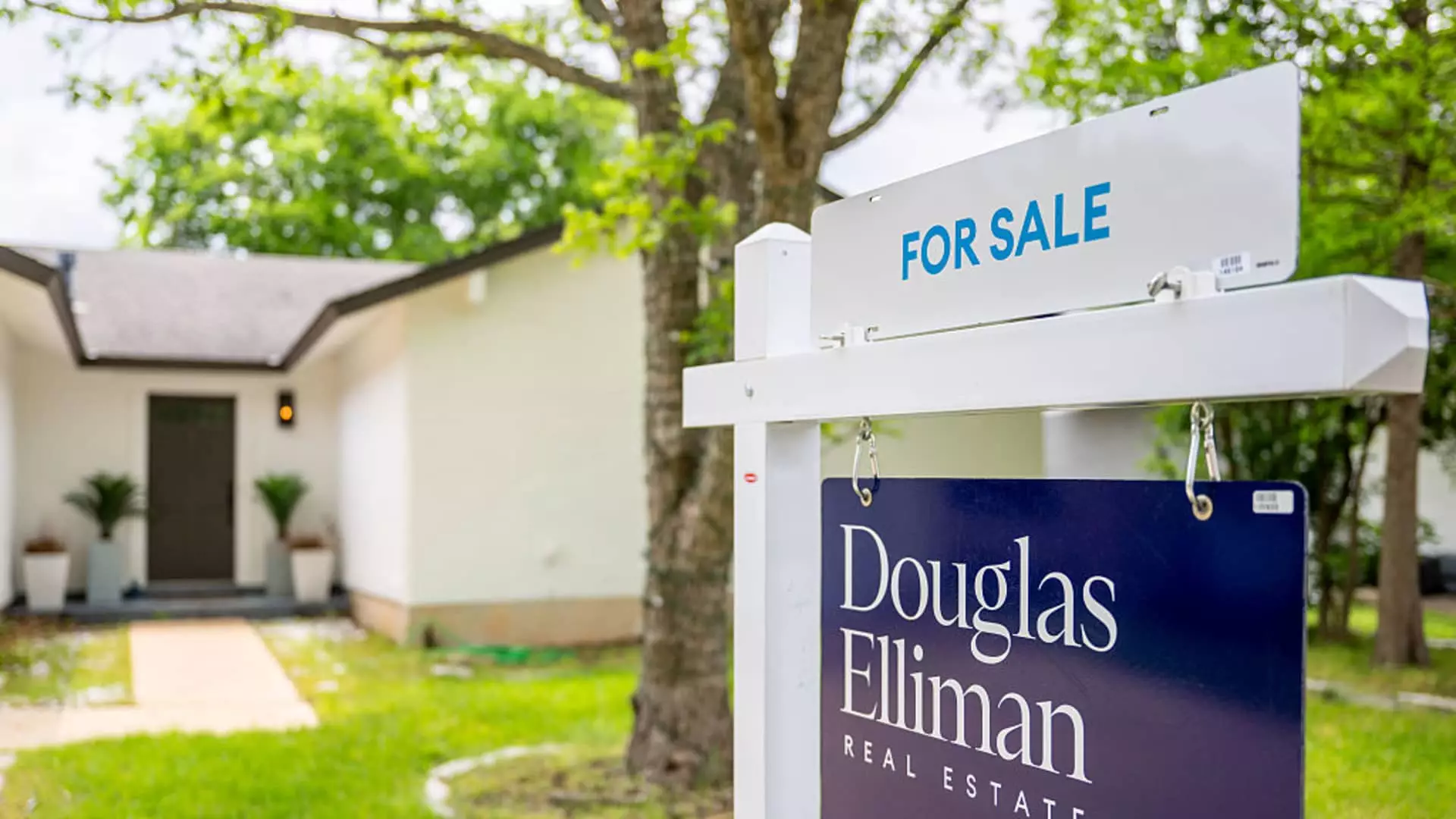The housing market, much like a patient in recovery, is showing a faint but notable heartbeat as the sales of previously owned homes modestly rose by 0.8% in May, reaching a seasonally adjusted rate of 4.03 million units. However, this faint ray of optimism is dimmed by the reality of a 0.7% decline in sales compared to the same month the previous year. These statistics, reported by the National Association of Realtors (NAR), paint a complex picture—one where marginal gains are overshadowed by an overall trend of stagnation and uncertainty.
This tepid growth, particularly striking against predictions of a drastic 1% decline, begs further analysis. Sales were notably stronger in the Northeast with a rise of 4.2% month-over-month, providing a glimpse of regional variations that evoke intrigue. The Midwest and South also saw slight increases, yet the stark contrast with the West—where sales plummeted by 5.4%—cannot be overlooked. It is noteworthy that the West, arguably the most expensive region for homebuyers, continues to grapple with affordability challenges. This geographical disparity reflects not only the variance in economic conditions but also the shifting priorities of buyers.
Impact of Rising Mortgage Rates
Holding steady at a critical juncture, mortgage rates have shown an unsettling tendency to rise, surpassing the 7% mark in April. Lawrence Yun, NAR’s chief economist, suggests that this relentless pressure from high mortgage rates is a significant factor restricting market activity. Though there may be some hope for prospective buyers as Yun hints at a potential decline in rates, it remains to be seen whether this will spark a substantial uptick in sales. The economic environment is currently tenuous, with many on the sidelines due to fear of economic instability.
The paradox here is stark: the housing inventory has increased dramatically, with a reported 1.54 million units for sale—a growth of over 20% from the previous year. At face value, this influx could indicate a thriving market, yet it merely underscores the anxiety of sellers who find themselves unable to sells their homes amid stagnant demand and escalating costs. The inventory levels provide a 4.6-month supply, which is relatively low historically, yet this figure paints a skewed picture in the context of burgeoning mortgage costs.
Price Pressures and Market Dynamics
Price dynamics reveal a resilient yet fragile housing market; the median price of existing homes climbed to a staggering $422,800 in May—setting yet another record for that month. This increase of 1.3% year over year reflects the persistent pressure of demand outpacing supply. Strikingly, 28% of homes sold above their list price signifies fierce competition among buyers, a substantial increase from the previous month’s 18%. However, this figure dips slightly from year-ago levels of 30%, suggesting a possible ceiling on buyer willingness to pay.
The higher-end market appears to be experiencing a paradoxical moment. While it has historically outperformed its lower-priced counterparts, recent trends suggested a dwindling interest in homes priced above $1 million. Interestingly, only the $750,000 to $1 million bracket saw a small uptick. This shift hints at an evolving landscape where even affluent buyers are not immune to the market’s constraints—a reminder that economic fluctuations can reverberate throughout all price tiers.
The Long Road for First-Time Buyers
As the housing market grapples with rising prices, it continues to alienate first-time buyers, who comprise only 30% of the market—a slight decline from last year. This demographic’s woes highlight a pervasive systemic issue: while the market appears robust on the surface, the foundational barriers faced by newcomers are barriers to sustainable growth and long-term stability. The figure of 27% of transactions being all-cash—a notable increase from the previous year—augments the challenge for those reliant on financing.
In light of these pressures, it is essential for policymakers and industry leaders to engage in dialogues that prioritize accessibility and affordability, allowing more individuals and families to tread the water of the housing market. The disparity between those who can afford to pay in cash and those struggling with mortgage payments will ultimately determine the health and longevity of the market.
The delicate balance between rising rates, fluctuating prices, and regional disparities construct a complicated tapestry of the current housing landscape. This market is riddled with both opportunities and challenges in an era defined by economic unpredictability.

